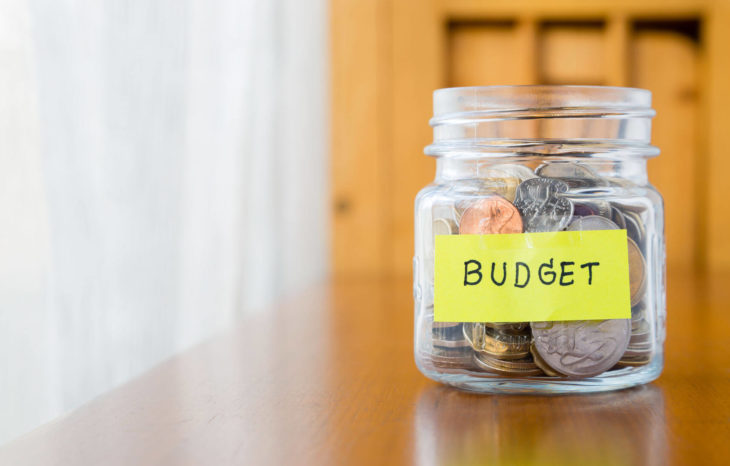I’m 100 percent guilty of spending without really thinking. Downsizing my expenditures really isn’t something I ponder, even though I know I should (and seriously, if I had a dollar for every time my husband told me I needed to ponder it, I likely wouldn’t need to ponder it at all). I’ve heard, though, that rehabbing my inner Suzie Spendthrift is as simple as taking a different approach to how I think about spending, which, for an otherwise savvy, self-aware chick like me, should result in smarter spending practices.
The goal for all of us who spend with reckless abandon: make like the late, great Michael Jackson and take a good, hard look at the (Wo)Man in the Mirror, asking yourself how you can change your spending ways. After the jump, some tips to get started.
Have A Budget

Source: AdobeStock
“Um, yeah … duh,” you’re probably thinking. Well, the truth is, tons of us crazy spender types don’t actually operate with one. Instead, we kinda spend as the money comes in, never paying much attention to the numbers, which often gets us in trouble. According to Mary Hance, author of the Nashville Tennessean’s “Ms. Cheap” column and the book 99 Things to Save Money in Your Household Budget, 48 percent of Americans suffer from “mystery spending” and on average we “lose track” of $2,340 annually. Damn, that’s a crapload of Ella Moss tees. Wait—back on track: to avoid becoming a statistic, make yourself finally create a budget by writing down what you take in every month and what you spend every month. “Take your time on this and be sure to think of everything you spend – including the cup of coffee on the way to work, the occasional lunch out, gifts for special birthdays or holidays, gifts to charity, insurance, taxes and all of those little incidentals that don’t seem like much but often add up to more than you think,” Hance advises. Sounds simple enough, no?
Just Say No

Source: Fotolia
If you’re really serious about downsizing your expenditures, Hance says you have to learn to exercise some shopping restraint. “Saying no is so hard because we’re so used to saying yes,” she explains. “Advertisers and marketers have pretty much brainwashed us into thinking we need to say yes to makeup and plastic surgery and sexual aids and shoes and hair color and so on and so on.” However, just like that jerk you used to date who’d always assume you’d split the check, at a certain point, I guess, you really gotta say no. “Doing so will allow you to have the money for the things you truly want and need,” says Hance.
Face The Reality Of Your Buying Habits

Source: The Rays Fans Shop
Hance says that a financial planner pal of hers always makes his clients perform the same exercise: First, he makes them write down everything they recently bought that they don’t need, don’t use, or don’t wear; then he instructs them to write down, to the best of their recollection, what they paid for each item and add it all up. “Obviously, the goal is to help people see that buying this little gadget or knickknack and this belt and that purse – none of which does anything to really improve the quality of life – adds up to big bucks,” Hance says. Next, he challenges them to think what could be done with all of that money – for themselves or someone else – if they had not bought all of those unnecessary things. So it’s not like you have to deprive yourself of all “fun” shopping, but you must take an honest inventory of it and consider what it’s ultimately costing you – both now and in the future.
Lower Your Standards

Source: Dorset Echo
Unwilling to give up your champagne wishes and caviar dreams? I hear ya. Really, though, no one’s asking you to totally – again, in the words of Michael—change your ways. “You don’t have to make a bare bones sacrifice of all that is good in life, but rather be willing to make some tradeoffs in some areas in order to have the things you really want in others,” Hance says. She suggests experimenting with a few “lesser things” and seeing what you think. Instead of springing for the amazingly adorable yet outrageously expensive Chanel jelly thongs, for example, why not check out the similar version from Nine West (and really, when you think about it, both are made of freaking plastic anyway)? Or maybe buy a box of chai latte mix (the one from Trader Joe’s is insane) and a plastic mug and try brewing your own at home each morning instead of getting one at Starbucks. There are lots of ways to be content for less if you’re committed to the goal of finding them, Hance says. Worth a shot.
Original by Chelsea Kaplan
